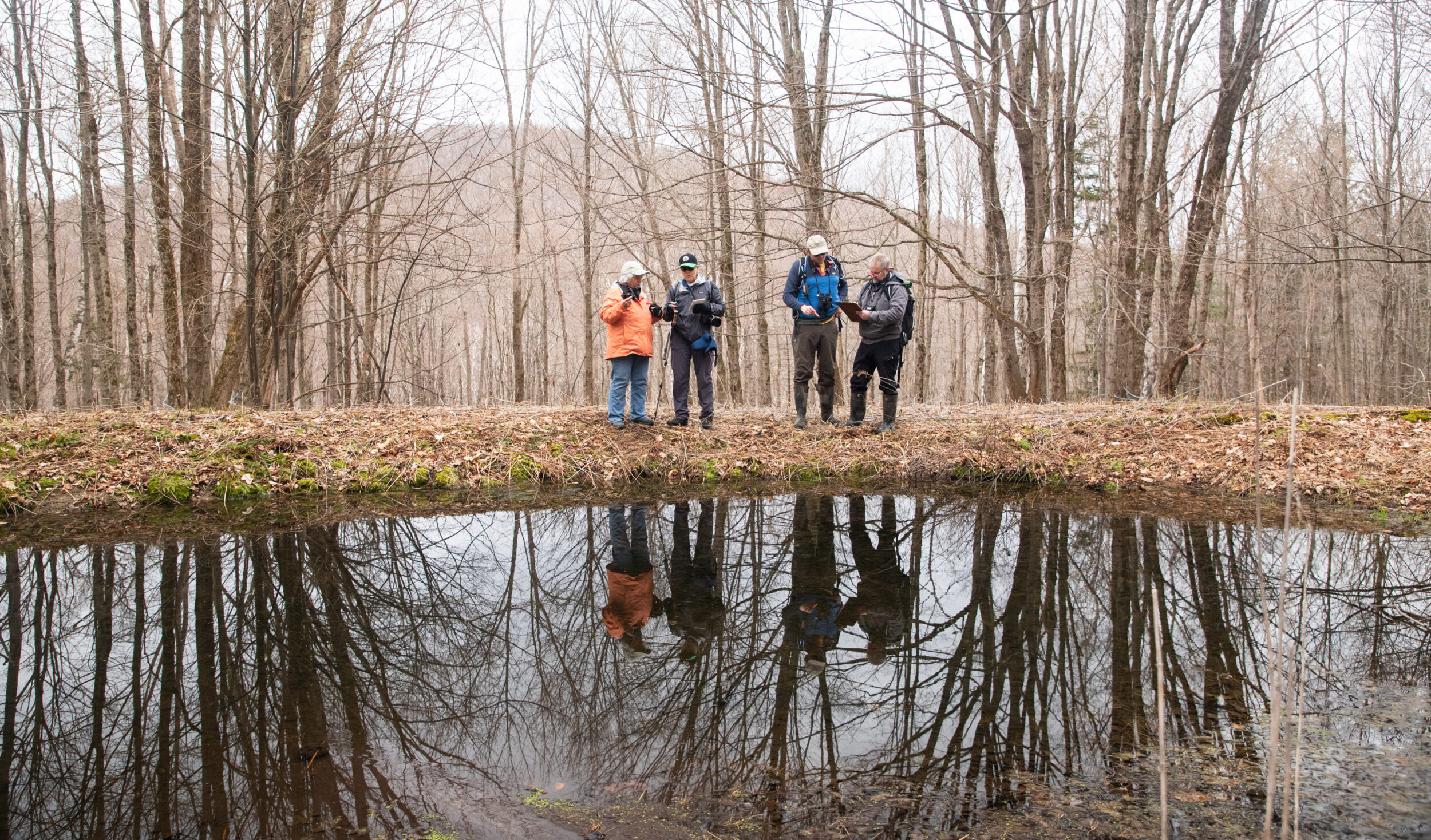
Merck Forest Vernal Pool Field Trip © Amy Earl
The view out your window may be frosty, but spring is closer than you think—literally. In the woods and ponds near your home, the amphibian heralds of spring are overwintering—all waiting to emerge and trek to their vernal pool breeding grounds.
Despite their ecological importance, these temporary wetlands have lacked robust federal protections. “Fortunately, vernal pools are pretty well conserved at the local level,” explains VCE Staff Biologist Kevin Tolan.
Vernal pool regulations are just one example of how state policies and local protections fill gaps left by weakened federal rules. In Vermont, vernal pools are considered Class II wetlands under the Vermont Wetland Rules, which means a permit is needed for any activity within 50 feet that isn’t an “allowed use.” To get a permit, the applicant must determine whether the pool supports the reproduction of uncommon pool-breeding amphibians (such as Blue-spotted and Jefferson Salamanders) and assess how the project may affect habitat quality.
Other newer state laws seek to address a threat that lurks beyond the pool’s edge. “My biggest concern is landscape fragmentation and how that impacts population dynamics,” says Tolan. “Because frogs and salamanders migrate to vernal pools to breed, the gene flow among pools can be reduced by road development and other land-use changes that limit their movement.”
Recently passed Vermont laws—such as the Act 250 reform (Act 181) and the 30 x 30 bill (Act 59)—encourage prioritization of actions that will minimize fragmentation and hopefully preserve the landscape connectivity that amphibians rely on.
Over the coming decades, altered weather patterns resulting from climate change are likely to disrupt the normal rhythms of vernal pools, potentially changing their regulatory needs. Earlier pool drying is of particular concern because it’s a death sentence for any water-bound amphibian larvae.
In the past few years, Tolan has begun tracking Wood Frog chorus periods and vernal pool temperatures through our Vernal Pool Monitoring Program (VPMon) to determine how frog activity and pool drying may be shifting. You can read more insights from five years of VPMon in Tolan’s 2025 report.
Within the next year, Tolan also plans to embark on a new VPMon project: updating 2009 vernal pool maps with newer spatial data. “Without having all vernal pools mapped, it’s difficult to tell exactly what we might be at risk of losing,” Tolan says. Mapping programs like this one and the Vernal Pool Atlas provide valuable tools for decision makers, conservation professionals, and landowners to use when protecting species and managing land.
Even with the rollback of federal protections, data still matter, especially at state and local levels. Thanks to VPMon and other research programs, VCE is able to contribute to evidence-based decision-making in Vermont and beyond, which helps ensure strong species and habitat protections.
If you’re feeling down about the state of the world, there’s no better way to brighten your spirits than traipsing through springtime forests and scouting for amphibian eggs as a volunteer Vernal Pool Monitor.
Read the entire Fall 2025 issue of Field Notes, fresh off the press, here. If you would like to receive a physical copy of the magazine, email .
